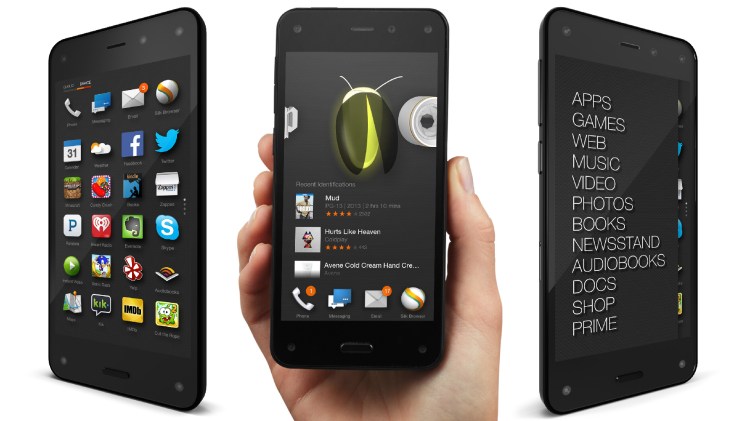Amazon’s Fire Phone innovates with its four-camera configuration. It innovates with its object-identifying Firefly feature. And it innovates with its Mayday feature that provides face-to-tracked-face assistance on the go.
But one way in which it doesn’t innovate may be the way that most people were hoping it would: price. Available for $199 on a two-year AT&T contract or $649 unlocked, the Fire Phone is similar to other premium phones such as the iPhone 5S and Samsung Galaxy S5.
The Fire Phone’s failure to disrupt has led many to question whether it is keeping the Amazon flame. Indeed, the cellular options available to Fire Phone buyers are less creative than the limited free data option Amazon offered with AT&T at the release of the Kindle Fire HD.
We’ll be exploring how you can grow your mobile business at MobileBeat 2014 in San Francisco on July 8-9.
When Amazon entered the tablet market with the $199 Kindle Fire, it set off a price war. Jeff Bezos noted that the company produces “premium products at a non-premium price.” But while Amazon has shown some willingness to follow others down the ladder as tablet pricing has collapsed, offering the Kindle Fire HD for $139, still a far cry from the sub-$100 tablets littering the pages of Walmart.com.
But, perhaps burned by that competitive tablet, things changed when the company introduced the Kindle Fire HDX, with its leading-edge processor and display technology. At a starting price of $229 for the 7-inch version, it is significantly less than the $299 iPad Mini, but so is nearly every other tablet below 8 inches.
A better comparison would be with the Google Nexus 7, also priced at $229. Amazon’s next category expansion — Fire TV, also loaded with powerful internals — came in at $99, the same price as Apple TV and the highest-end Roku player.

It’s not unusual for brands to climb the prestige ladder as their sales grow. HTC, for example, was once a company that developed phones and PDAs for other companies. In the 1980s, Samsung’s electronics were dismissed as cheap junk. Now, both are focused mostly on high-end gadgets.
But what Amazon is doing is more like a cross-country expedition than one up a mountain. As Jeff Bezos pointed out early in the Fire Phone presentation, its brand has strong recognition among consumers for customer satisfaction across several metrics.
And according to the YouGov brand index, which measures “brand health” across a variety of measures, Amazon was the #1 brand in 2013, with the Kindle sub-brand coming in 10th behind Cheerios. (Alas, the Fire Phone, like Fire TV, drops the “Kindle” delineation.) Amazon doesn’t need to raise the prestige of this brand, it just has to extend the influence of it.
There’s another factor at play. The Fire Phone has its share of features designed to keep you at a buying level Amazon finds palatable. However, much more of what consumers do on phones — tasks such as taking photos, sending e-mail and messages, mapping and, yes, even having voice conversations — are more difficult to monetize. If, as Jeff Bezos said, Amazon monetizes when consumers use their devices (since they inevitably drive purchases on Amazon), there’s simply less of the usage pie that Amazon is getting, at least compared to AT&T.
The Fire Phone may not strike fear into the heart of Apple and Samsung for the time being, but it’s clearly not intended to. It’s about providing an option to Amazon’s loyal customers in a product category where its ecosystem advantages are too diluted to disrupt at this point.
Volume Up is a regular column on consumer technology and digital ecosystems. Ross Rubin is principal analyst at Reticle Research and founder and editor of the crowdfunding product site Backerjack. He also blogs about the tech industry at Techspressive.
VentureBeat's mission is to be a digital town square for technical decision-makers to gain knowledge about transformative enterprise technology and transact. Learn More

